The redevelopment of a city block to create a University of Melbourne student precinct – with hopes of enticing students back to campus after the pandemic — has won Victoria’s top architecture award.
The ambitious project, designed by a team of architectural firms led by Lyons, includes two new buildings and five refurbished buildings around a large amphitheatre.
It was the most awarded project at the 2023 Victorian Architecture Awards, announced on Friday night, and took out the top gong, the Victorian Architecture Medal.
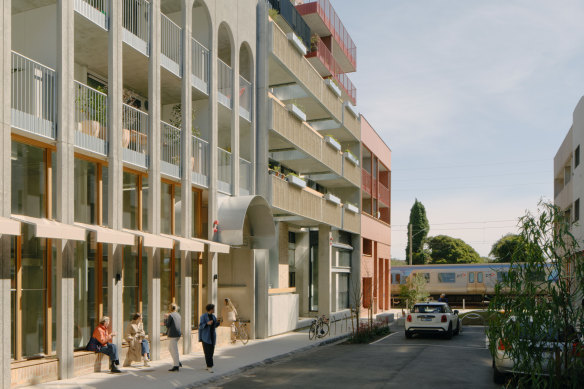
Nightingale Village, a residential precinct in Brunswick, also won a major architecture award.Credit: Tom Ross
Another multiple award-winning project was Nightingale Village, a residential precinct of 203 apartments across six buildings in Brunswick, which have limited car parks, no gas, and – notably – communal laundries on rooftops.
Each of the buildings was designed by a different architect, using the Nightingale principles of social, environmental and financial sustainability.
The state’s regional prize was awarded to Warrnambool Library and Learning Centre, which combines old and new elements, with a contemporary three-storey extension to the Gun and Orderly Room, which was built in 1868.
Sixteen major awards, 23 architecture awards and 25 commendations were announced on Friday night from 130 shortlisted projects.
Australian Institute of Architects state president David Wagner said the standard of architecture entered had soared.
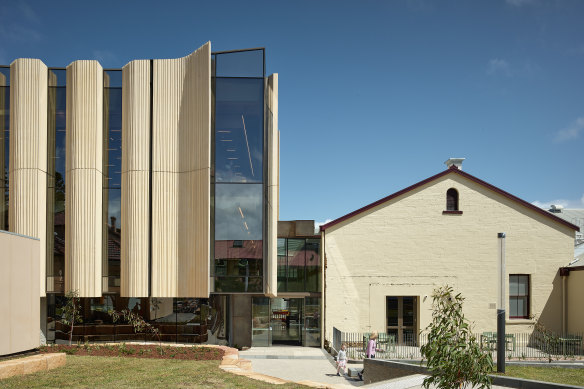
Warrnambool Library and Learning Centre won the state’s regional architecture prize.Credit: Derek Swalwell
“Part of that is our interest in sustainability, our interest in livability, having floors that people can roll into if they can’t walk, consideration of not having gas, photovoltaics on the roof, water retention. There are so many different aspects to it,” Wagner said.
“Building and architecture is getting more complex, but it’s getting richer as well.”
The University of Melbourne student precinct also won the major educational architecture and urban design categories.
The precinct reads like “a visual essay of the past 150 years of architectural history”, according to Architecture Australia, the journal of the Australian Institute of Architects.
The precinct includes the art deco 1930s Frank Tate building, the renovated 1888 building for graduate students, Lyons’ cutting-edge new $70 million arts and cultural building and the mesh-scaffolded student pavilion, which was designed as a neighbourhood hang-out.
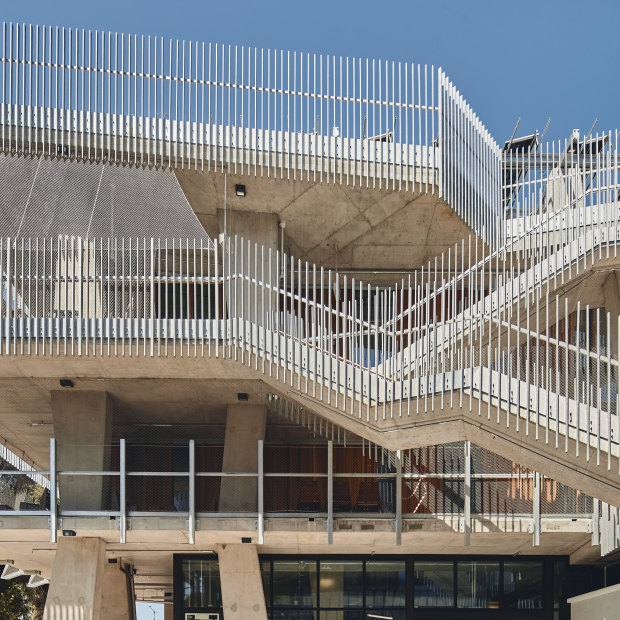
The student pavilion building in the University of Melbourne student precinct.Credit: Peter Bennetts
The precinct was designed by Lyons with Koning Eizenberg Architecture, NMBW Architecture Studio, Greenaway Architects, Architects EAT, Aspect Studios and Glas Urban.
“When you look at the buildings there aren’t principal elements,” Wagner said. “It’s not like the Beaux-Arts approach to design, such as Versailles, where the principal orientation is towards the main entry, the big courtyard.
“This approach is much more pluralistic, it’s in the heritage of Robert Venturi, the famous American architect who wrote Complexity and Contradiction in Architecture, which is about this idea that actually it’s the complexity and the contradiction which actually makes the interest.”
The precinct is on the land of the Wurundjeri people and is the site of the former Bouverie Creek, a migration path for eels on their journey from the Coral Sea.
Indigenous students and communities were consulted in the design of the Welcome Ground, which re-establishes the lost creek to create a dramatic new entry to the university.
Wagner said the university wanted to provide a precinct that encouraged students to get together, with gathering spaces, cafes and quiet corners.
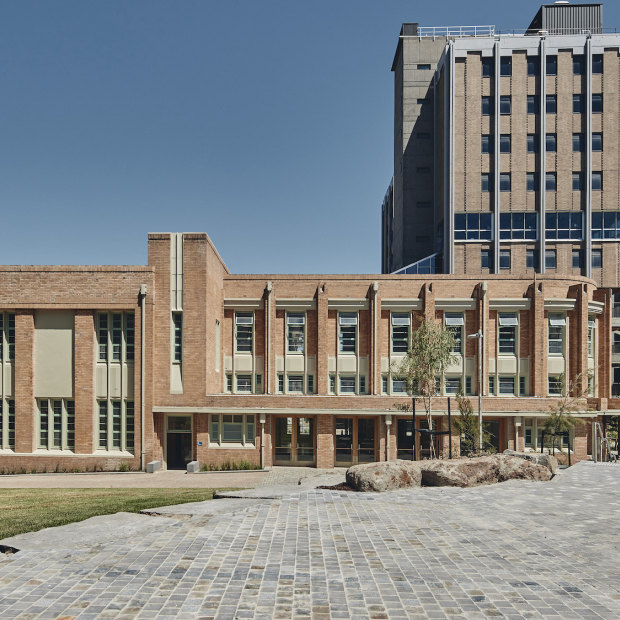
The University of Melbourne student precinct was designed to encourage students to get together.Credit: Peter Bennetts
“COVID and the pandemic has taught everybody that there is a great richness to be gained in our community by physical engagement rather than just virtual discussions,” he said.
Nightingale Village, which won the Dimity Reed Melbourne Prize and the major award for sustainable architecture, was designed by Architecture architecture, Austin Maynard Architects, Breathe, Clare Cousins Architects,
Hayball and Kennedy Nolan.
Wagner said the Nightingale project explored how to deal with the sustainability crisis by building on brownfield sites, which are close to public transport, and providing few car parks to reduce people’s reliance on driving.
The apartments don’t have washing machines – which saves space and money – and a communal rooftop laundry provides a chance to meet neighbours.
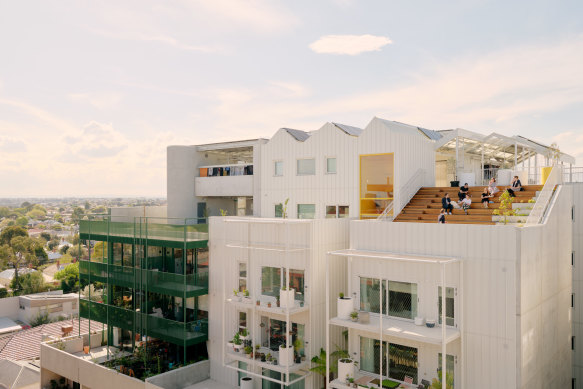
The Nightingale Village rooftop is a place neighbours can meet.Credit: Tom Ross
“The collective of architects behind this project began their journey seeking to redefine the expectations of developers, architects and what it means to provide housing,” the Dimity Reed Melbourne Prize jury said.
The Warrnambool Library and Learning Centre, designed by Kosloff Architecture, won the regional prize.
The library last month also won two international awards in the Architizer A+ Awards, the world’s largest awards for architecture and spaces.
“I had a great conversation where someone remarked, ‘If I’d had this during VCE or HSC I might have had a different trajectory’, and I think it’s testament to the potential for public architecture to really provide positive change within a community,” Kosloff Architecture director Julian Kosloff said at the time.
Wagner said the new library integrated with the 1860s building, showing “all of the war wounds and the character of the old building but then has a glazed staircase and circulation space”.
He said there had been some excellent architecture developed in regional areas in recent years, including the Bendigo Law Courts, which won the major public architecture award.
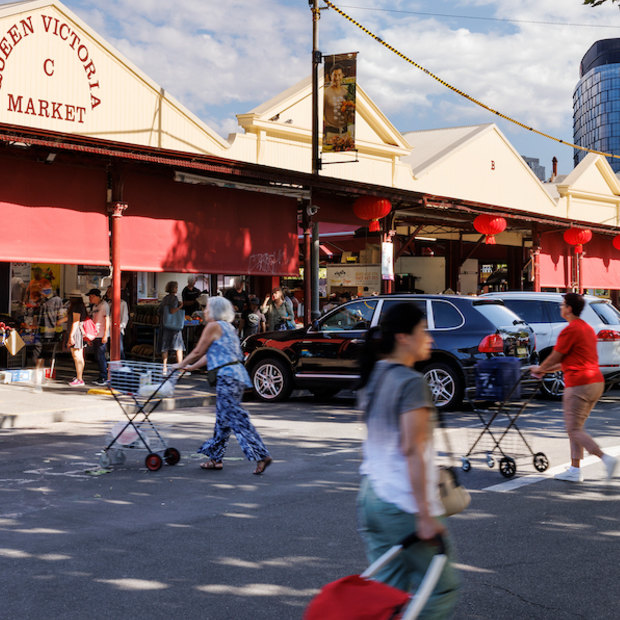
The Queen Victoria Market sheds.Credit: Dianna Snape
The restoration of Queen Victoria Market sheds A-D and H-I, by NH Architecture with Trethowan Architecture, won the major heritage architecture prize.
“There is recognition now that heritage isn’t just the 1880s building,” Wagner said.
“It’s not just about preserving the palaces and the villas, it’s also about preserving more utilitarian structures. It’s a matter of recognising heritage isn’t just a type of buildings, it isn’t just a period, it’s all sorts of things, and we can use that to enrich our community.”
For the complete list of 2023 Victorian Architecture Award winners go to https://www.architecture.com.au/vic-awards.
The Morning Edition newsletter is our guide to the day’s most important and interesting stories, analysis and insights. Sign up here.
